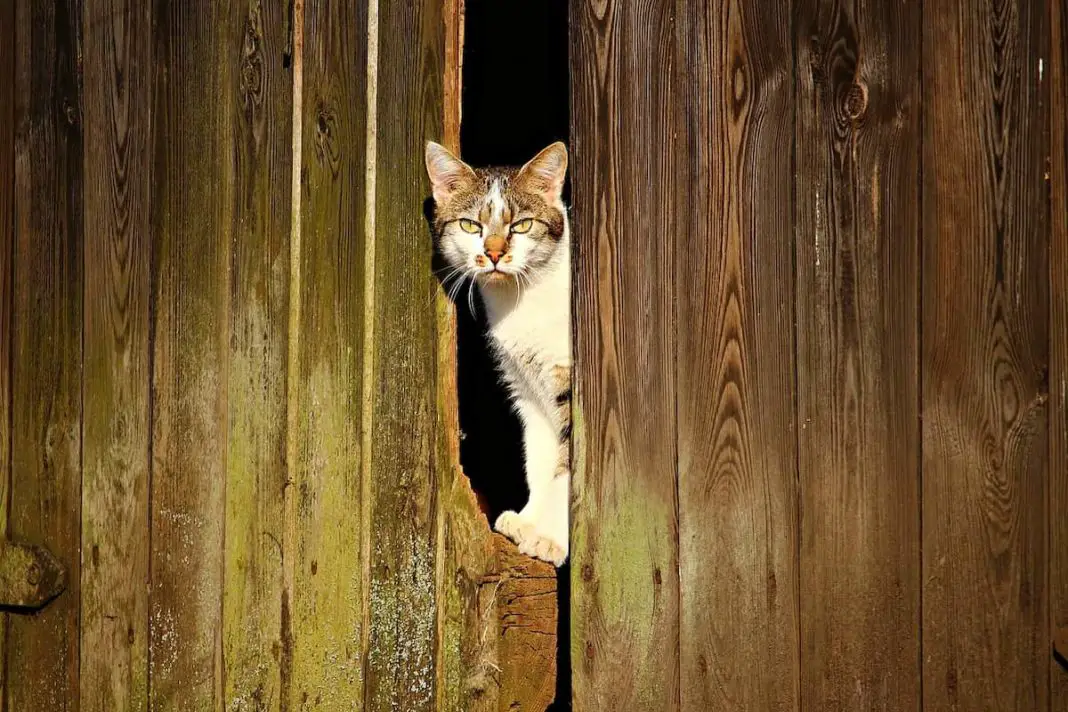My Cat Wants To Stay Outside All The Time?
It’s normal for owners of indoor cats to feel a bit guilty when they keep their cats indoors all the time, especially if the cat is trying like crazy to get outside. Many indoor cats want to go outside without really understanding what awaits them in the outdoors. Replicating an outdoor experience exactly can be challenging, although many cat owners try creating a stimulating indoor environment for their cats through the use of enrichment activities, despite this, your indoor may still strive to get outside.
When making the decision to let your cat outside, safety should always be your first concern, and there are definitely some big risks involved in allowing your indoor cat to go outside. We’ll be breaking down some helpful ideas for letting your cat explore the outdoors safely.
The Outdoor Life
Humans have always viewed cats as independent creatures and are still considered by many to need outdoor freedom to stay happy. Outdoor living can give natural stimuli that lots of cats find exciting and fun. From climbing trees to chasing mice and bugs to lying in the sun for leisurely naps.
If you’ve adopted a stray or feral cat, especially one that has never lived with humans, then they may be more insistent about continuing to go outside than a cat that has lived indoors from an early age.
Safe Solutions For Indoor Cats That Want To Stay Outside
Cat lovers who want their cats to enjoy the fresh air, sunshine, and the ambience of trees, bushes, and plants can often feel guilt by confining their cat to the indoors. However, a similar mindset in previous generations: that cats were free and independent creatures and therefore shouldn’t be confined indoors. The previous generation of cat owners thought that their cats couldn’t be healthy, happy, and active if they weren’t allowed to experience all the glories of the outdoors.
However, these days we realise and understand the hazards of allowing a cat to roam freely, either through personal experience or through the media, including the Internet. Here are just a few of the dangers that the outdoors pose, although it’s not an exhaustive list.
- The risk of contracting a killer disease such as FIV, FeLV, and FIP
- The risk of getting a parasitic infection
- You can’t observe their litter-box habits and may miss evidence of FLUTD.
- Injury and/or death from attacks by neighbourhood dogs, cats, or predators
- Injury or death from vehicles
- “Cat-napping” for profit, or personal gain
- Trapping and disposal by neighbors that hate cats
- Torture and/or killing by psychopaths
- Confiscation by animal control authorities
- Risk of ingesting a toxic plant and exposure to pesticides
On the other hand, there are some safe compromises you can give your indoor cat which should help offer you and your cat the best of both worlds, without the potential hazards of free-roaming outdoors
Carrying Your Cat
There are some cat owners who carry their cat around their backyard, allowing them to sniff and explore at will.
It’s recommended to start with just a minute or two for more timid cats that’s not used to the outdoors. Carrying your cat can be a great way to accustom them to the initially scary world of the outdoors, and a good preface to the next step.
Leash Training
Any cat can be trained to use a harness and leash by using a gradual method of training. Some cats can initially feel confined by the additional weight of the harness, and their first attempts at walking on a leash may appear of more of the “slinking” or “belly-crawling” variety. However, with some time and patience from the owner, most cats will enjoy walking and exploring while on the leash.
During the initial stages, your cat may prefer to just “lie around” outdoors on their leash. Over time they’ll eventually progress to walking with their owner. It’s all a matter of time and patience.
It’s important to note that tying your cat outside on a leash is not a substitute for personal interaction and supervision. Cats should never be left alone while they’re outdoors on the leash or using a rope extension. There is too much danger of them becoming tangled up, or the possibility of them choking.
Pet experts recommend using a sturdy harness or walking jacket, as opposed to a collar. Although collars are popular, they can slip off your cat too easily, which most likely will happen during times of danger, for example, when meeting a strange dog or a cat walking down the street. Try buying a leash that’s as lightweight as possible, consistent with safety. The additional “drag” of leash that’s bulky will slow your cat’s walking progress.
Before using the leash outdoors, be sure to test your cat’s new leash indoors for a few days before using it outside. Going at a slow and easy pace will result in a cat with a safe and positive indoor and outdoor experience.
Kitty Stroller
Using a kitty stroller will provide both a durable nylon netting cage so your cat can enjoy the outdoor experience and a stroller that has a water-resistant canvas for protection from the sun.
Outdoor Enclosures
If you think your cat would prefer to “free-roam” (within limits), then an outdoor enclosure could be the perfect solution. They can be built from scratch, with your own or purchased plans, or can come as assembled modular enclosures.
Your experiences can vary with the safe outdoor experience ideas that have been mentioned above, but we think you’ve been given enough alternatives here to get you started.
Kitty Doors: Access to the Outside
Kitty doors are great, if the right one is selected and installed properly, and you use it the right way. It goes without saying that a cat door should only lead out to a securely fenced garden/yard. Your yard should be secure enough to prevent your cat from leaping over it. For your typical agile kitty, this can often be quite difficult to do. Any fences should also be locked from the inside.
With that said, another important point to make about cat doors: you should never leave your cat alone for long periods. In fact, a cat door should be closed and locked when you’re away for any reason.
Conclusion
There is definitely a happy medium between keeping your cat indoors all the time and exposing them to the dangers of the outdoors. Depending on your cat’s personality, you could be able to train them to use a leash train for experiencing the outdoors, or you may just have a friendly cat companion to sit in the backyard with you, allowing them to soak in the sunshine.
Either way, the top priority for your cat should always be safety. It’s also important to read your cat’s cues. Although many cats are perfectly satisfied with a wholly indoor life, there are others that may be comfortable slowly adjusting to walking outdoors on a harness and leash or exploring a small patch of the garden under your direct supervision. Use common sense—and when in doubt, err on the side of caution by keeping your cat indoors.








